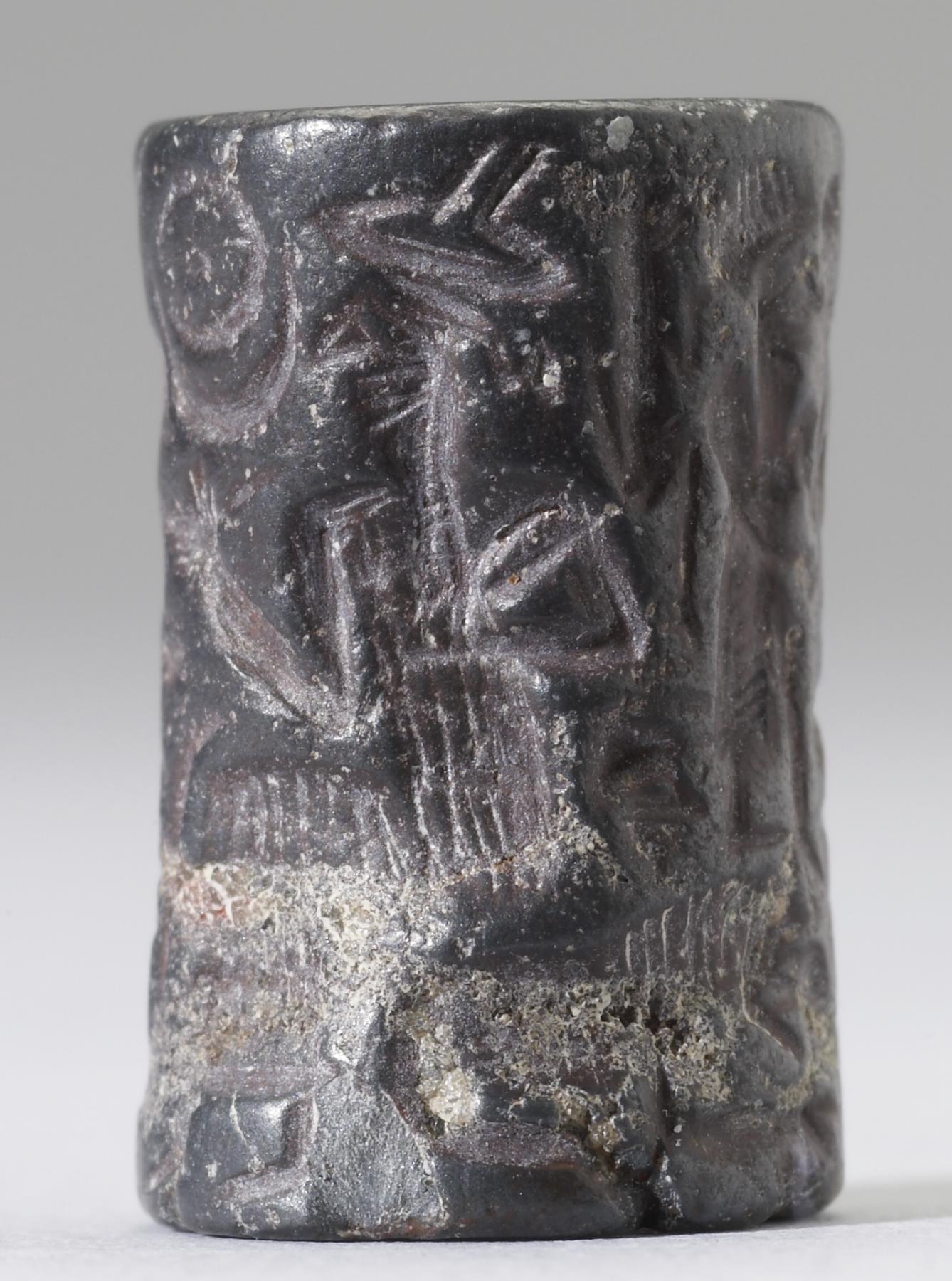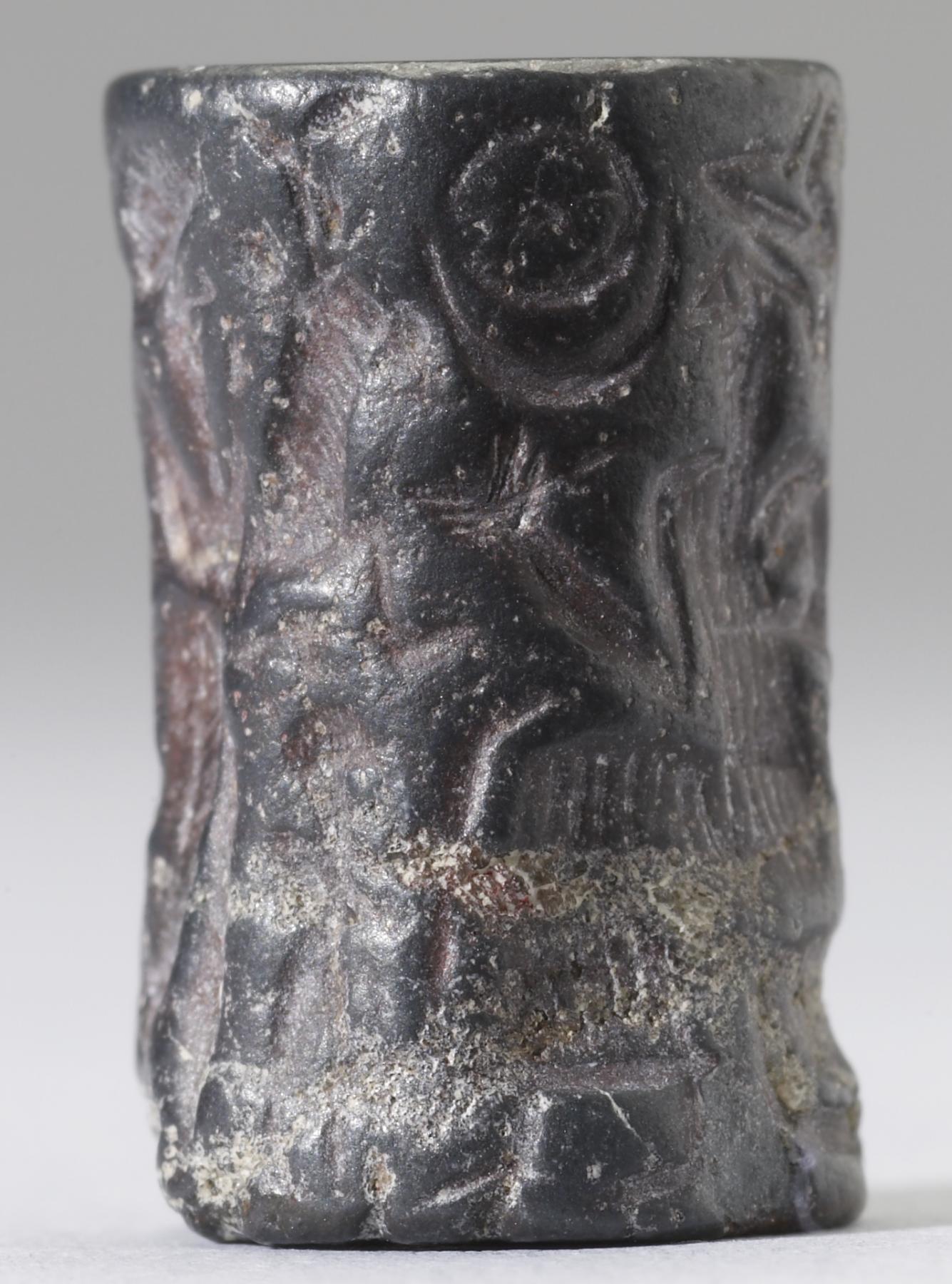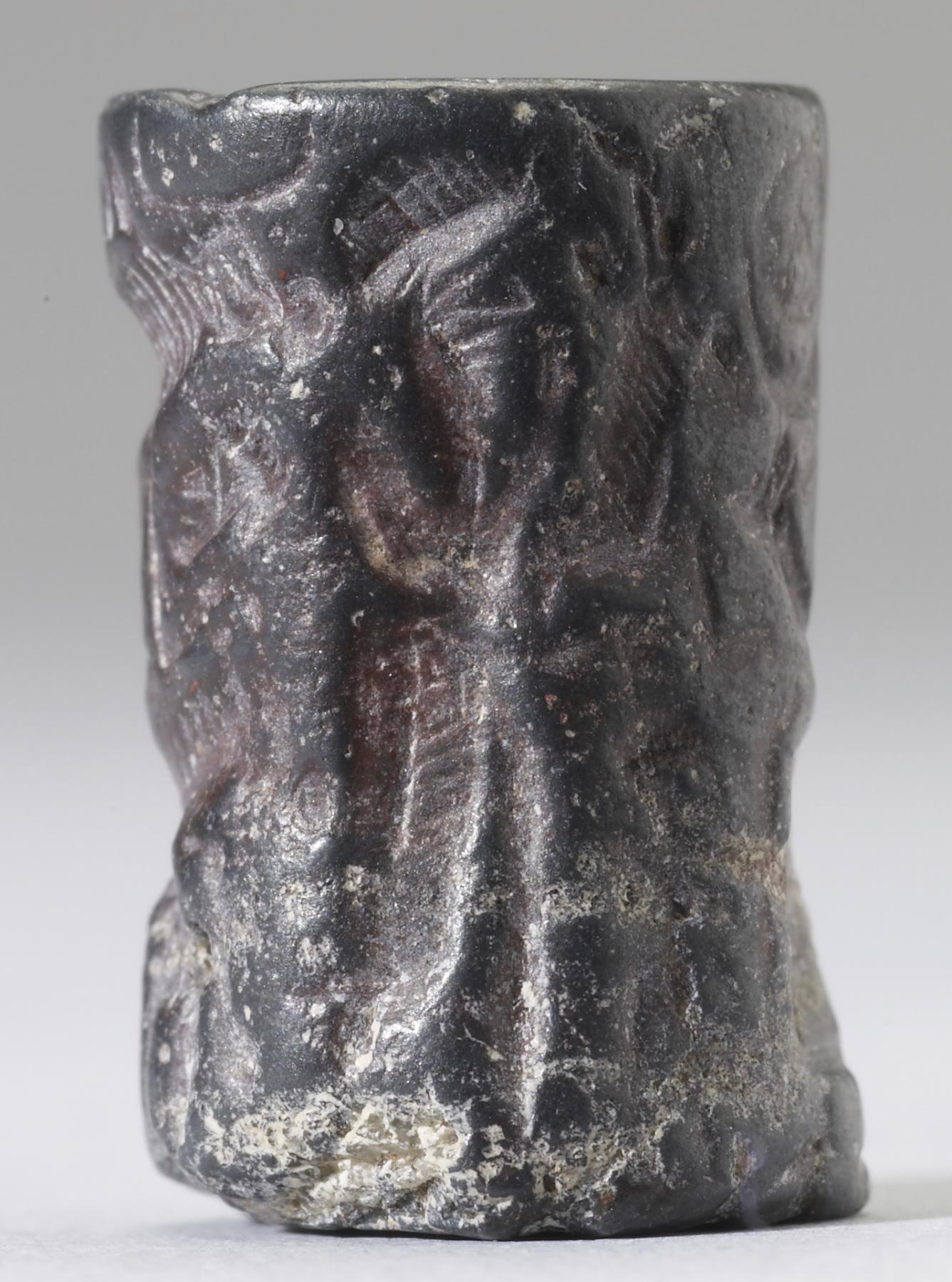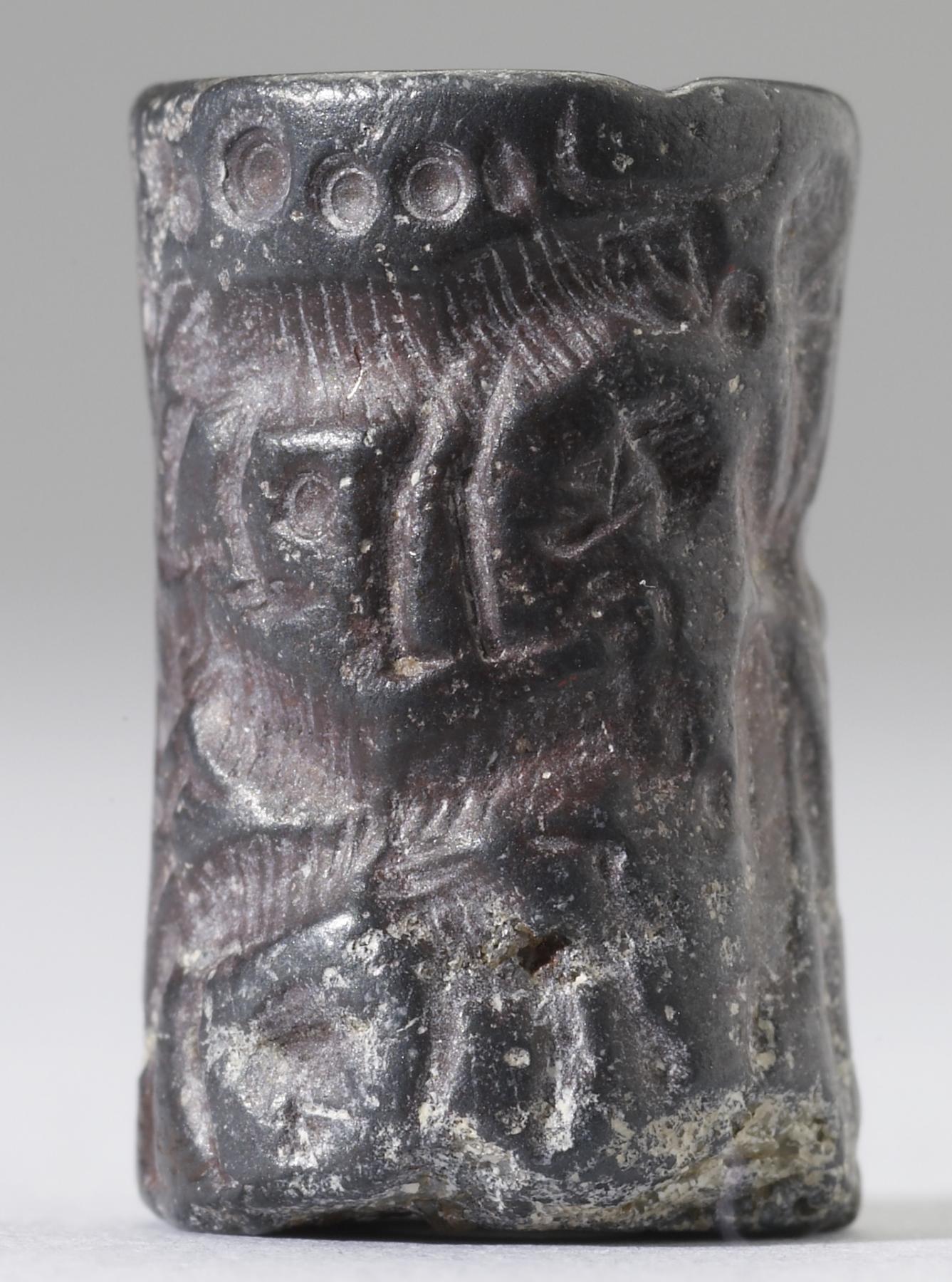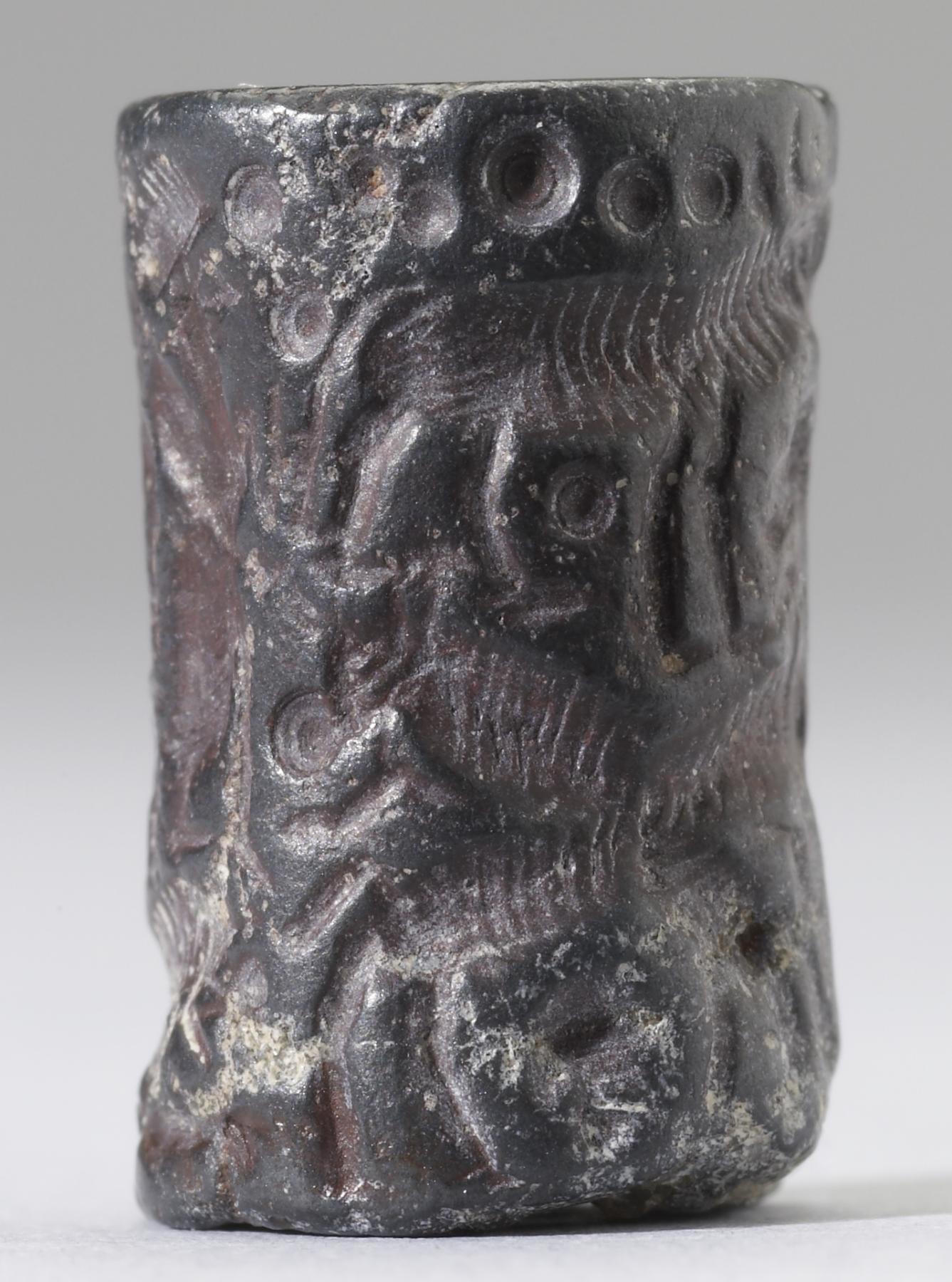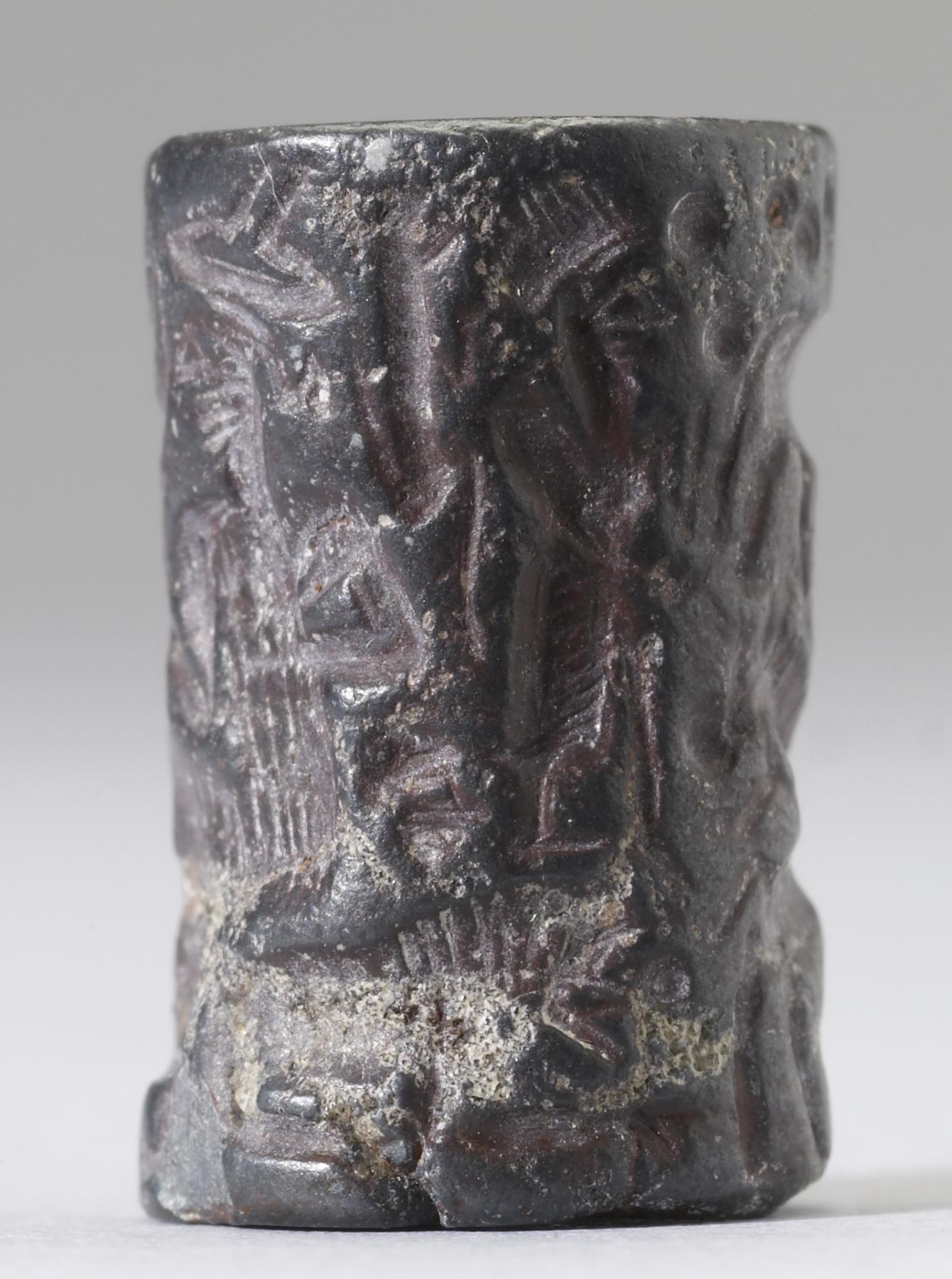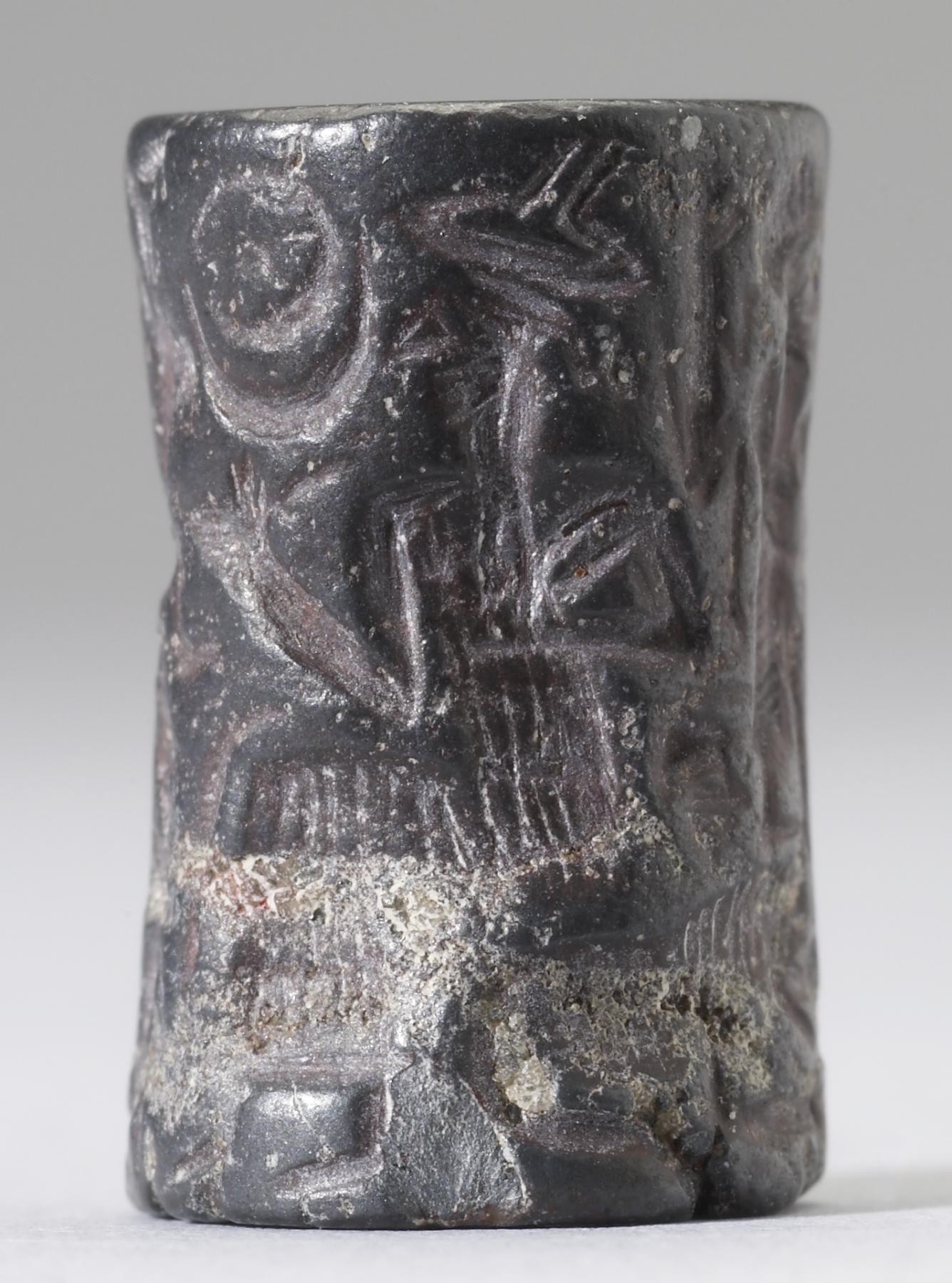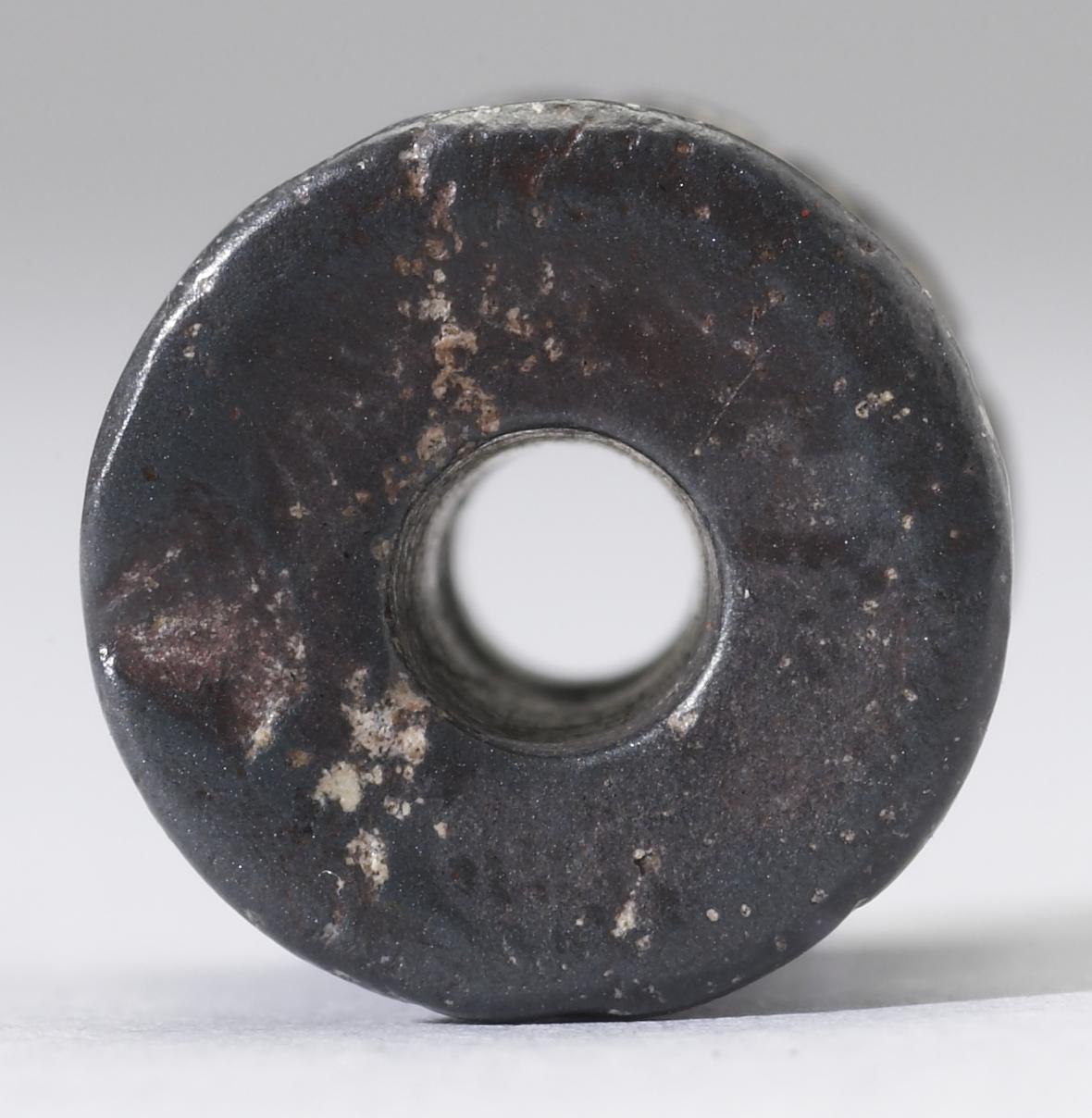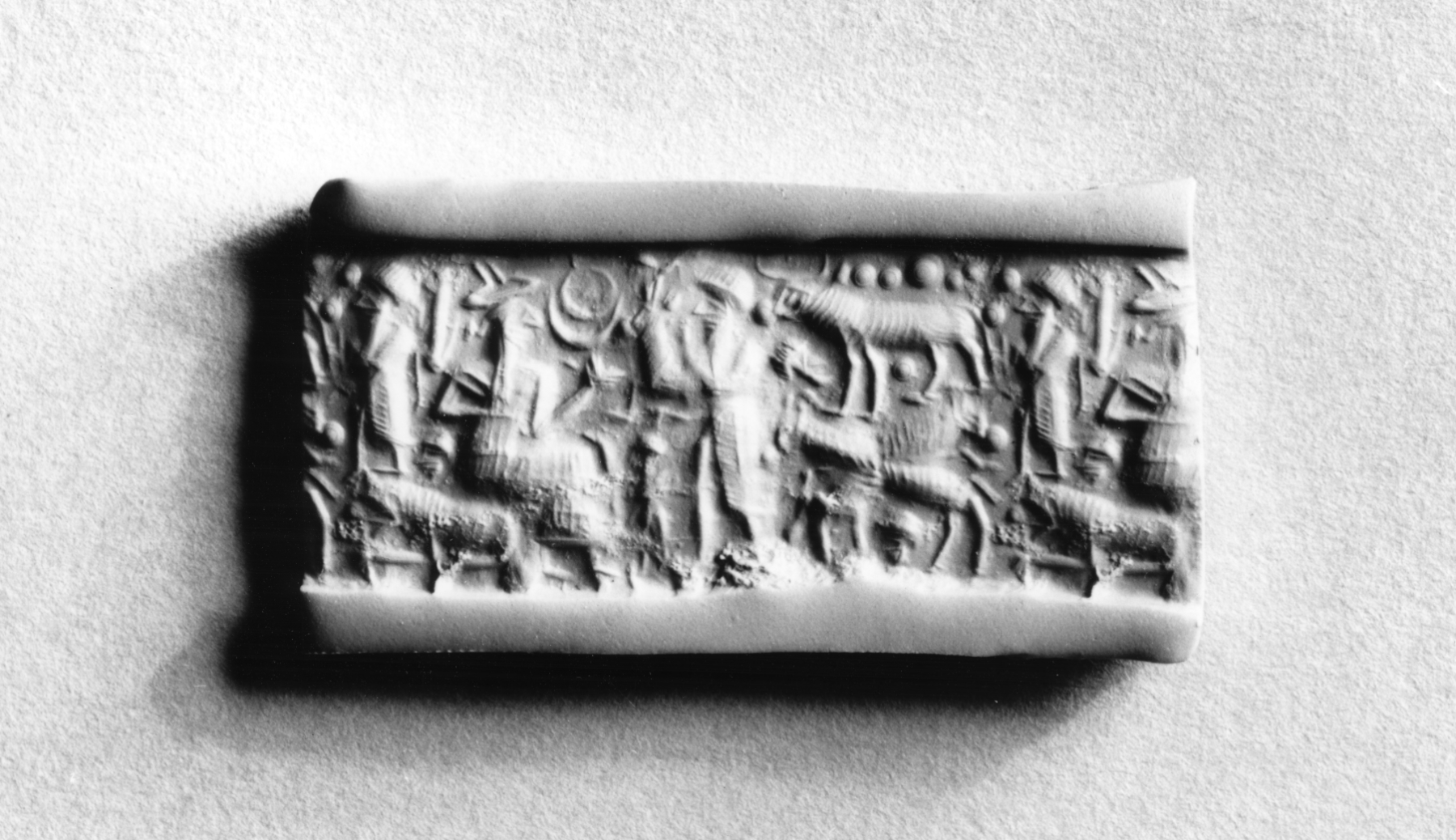Cylinder Seal with a Presentation Scene and Cattle
(Ancient Near East )
Seals first appeared in Cappadocia in the early 2nd millennium BCE. Mesopotamian influence can be seen in the use of hematite and elements such as the worshipper before the seated deity and the sun disk inside a crescent. Typically Cappadocian, however, is the crowded composition with a standing man and many animals. The people of this region had contact with the Mesopotamians and also with the Assyrians, who established a trading center at Kültepe during the Old Assyrian Trading Colony period (ca. 1840-1730 BCE).
Cylinder seals are cylindrical objects carved in reverse (intaglio) in order to leave raised impressions when rolled into clay. Seals were generally used to mark ownership, and they could act as official identifiers, like a signature, for individuals and institutions. A seal’s owner rolled impressions in wet clay to secure property such as baskets, letters, jars, and even rooms and buildings. This clay sealing prevented tampering because it had to be broken in order to access a safeguarded item. Cylinder seals were often made of durable material, usually stone, and most were drilled lengthwise so they could be strung and worn. A seal’s material and the images inscribed on the seal itself could be protective. The artistry and design might be appreciated and considered decorative as well. Cylinder seals were produced in the Near East beginning in the fourth millennium BCE and date to every period through the end of the first millennium BCE.
Provenance
Provenance (from the French provenir, 'to come from/forth') is the chronology of the ownership, custody, or location of a historical object.
Henry Walters, Baltimore, [date and mode of acquisition unknown]; Sadie Jones (Mrs. Henry Walters), New York, 1931, by inheritance; Joseph Brummer, Paris and New York, 1941, by purchase; Walters Art Museum, 1941, by purchase.
Conservation
| Date | Description | Narrative |
|---|---|---|
| 6/4/1968 | Treatment | other |
| 11/24/1998 | Examination | survey |
Geographies
Turkey, Cappadocia (Place of Origin)
Measurements
H: 11/16 x Diam: 7/16 in. (1.8 x 1.2 cm)
Credit Line
Museum purchase [formerly part of the Walters Collection], 1941
Location in Museum
Accession Number
In libraries, galleries, museums, and archives, an accession number is a unique identifier assigned to each object in the collection.
In libraries, galleries, museums, and archives, an accession number is a unique identifier assigned to each object in the collection.
42.800

